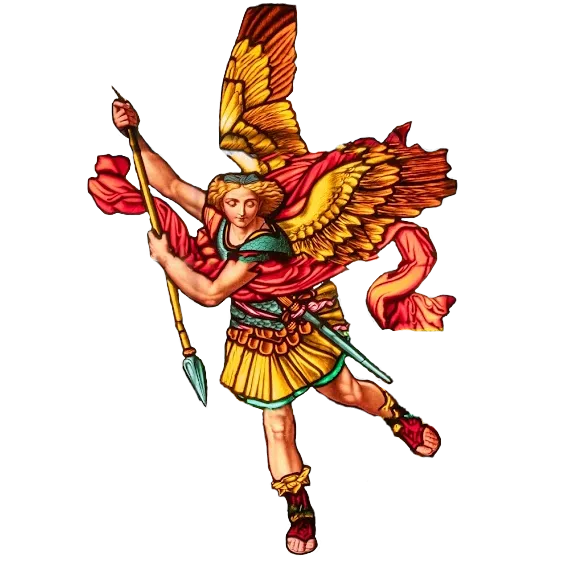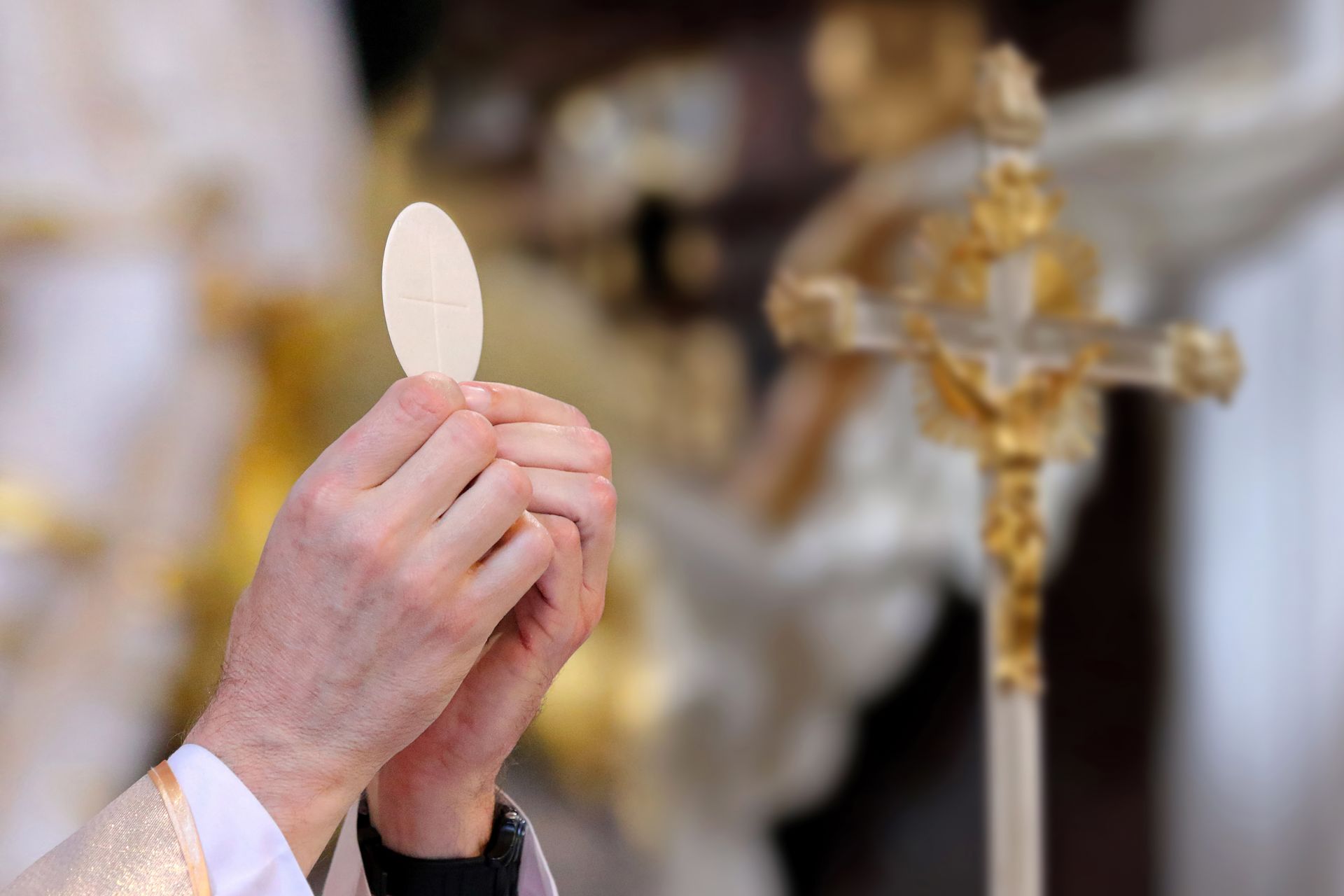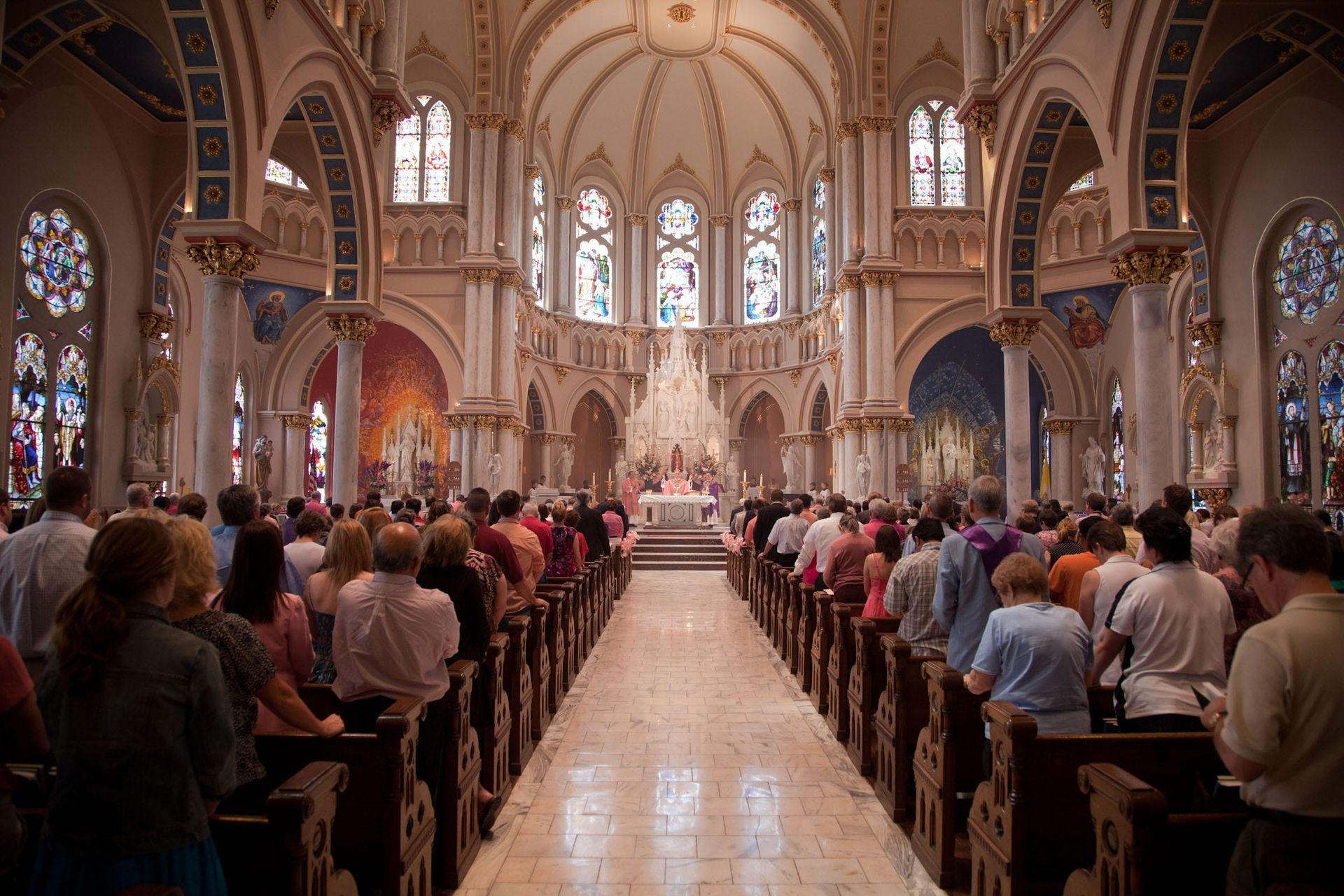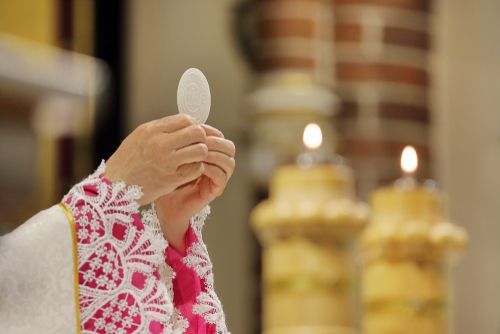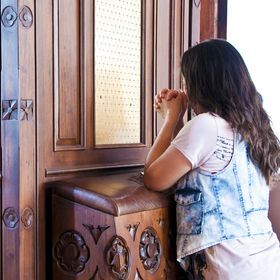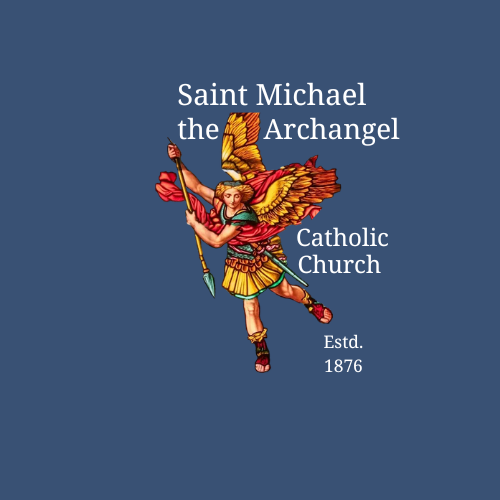The Order of the Mass
Then he [Jesus] took the bread, said the blessing, broke it, and gave it to them, saying, “This is my body, which will be given for you; do this in memory of me.”
Luke 22: 19
The Order of the Mass
The Mass is the most important sacramental celebration of the Church, and the Mass always follows a set order which is universal throughout the world.
This page contains the description of "The Order of Mass" with the accompanied videos for each part of the Mass.
Watch this video for the complete version on The Mass Series.
I. Introductory
Rites:
Preparing to Celebrate the Eucharist
1. Entrance Chant
The Mass begins with the entrance antiphon, and is sometimes preceded by a processional hymn. We gather as a community and praise God in song.
The celebrant and other ministers enter in procession and reverence the altar with a bow and/or a kiss.
The altar is a symbol of Christ at the heart of the assembly and so deserves this special reverence.
2. Greeting
All make the Sign of the Cross and the celebrant/ priest extends a greeting to the gathered people in words taken from Scripture.
3. Penitential Act
The Penitential Act follows the greeting.
At the very beginning of the Mass, the faithful recall their sins and place their trust in God's abiding mercy.
The Penitential Act includes the Kyrie Eleison, a Greek phrase meaning, "Lord, have mercy." This litany recalls God's merciful actions throughout history.
On Sundays, especially in Easter Time, in place of the customary Penitential Act, from time to time the blessing and sprinkling of water to recall Baptism may take place.
4. Gloria
On Sundays, solemnities, and feasts, the Gloria follows the Penitential Act.
The Gloria begins by echoing the proclamation of the angels at the birth of Christ: "Glory to God in the highest!"
In this ancient hymn, the gathered assembly joins the heavenly choirs in offering praise and adoration to the Father and Jesus through the Holy Spirit.
5. Opening Pray (the Collect)
The Introductory Rites conclude with an opening prayer, called the Collect. We ask God to hear our prayers.
The celebrant invites the gathered assembly to pray and, after a brief silence, proclaims the prayer of the day.
The Collect gathers the prayers of all into one and disposes all to hear the Word of God in the context of the celebration.
II. Liturgy of the Word:
Hearing God’s Plan of Salvation
Most of the Liturgy of the Word is made up of readings from Sacred Scripture.
On Sundays and solemnities, there are three Scripture readings. During most of the year, the first reading is from the Old Testament and the second reading is from one of the New Testament letters.
During Easter Time, the first reading is taken from the Acts of the Apostles which tells the story of the Church in its earliest days.
The last reading is always taken from one of the four Gospels.
In the Liturgy of the Word, the Church feeds the people of God from the table of his Word (cf. Sacrosanctum Concilium, no. 51).
The Scriptures are the word of God, written under the inspiration of the Holy Spirit.
In the Scriptures, God speaks to us, leading us along the path to salvation.
6. First Reading
We listen to God’s Word, usually from the Old Testament.
7. Responsorial Psalm
The Responsorial Psalm is sung between the readings. The psalm helps us to meditate on the Word of God. We respond to God’s Word in song.
8. Second Reading
We listen to God’s Word from the New Testament.
9. Gospel Acclamation
The Gospel is introduced by an acclamation of praise.
Apart from Lent, that acclamation is "Alleluia," derived from a Hebrew phrase meaning "Praise the Lord!". We sing “Alleluia!” to praise God for the Good News.
10. Gospel Reading
The high point of the Liturgy of the Word is the reading of the Gospel.
Because the Gospels tell of the life, ministry, and preaching of Christ, it receives several special signs of honor and reverence.
The gathered assembly stands to hear the Gospel. A deacon (or, if no deacon is present, a priest) reads the Gospel.
11. Homily
After the Scripture readings, the celebrant preaches the homily.
In the homily, the priest focuses on the Scripture texts or some other texts from the liturgy, drawing from them lessons that may help us to live better lives, more faithful to Christ's call to grow in holiness.
12. Profession of Faith
In many Masses, the Profession of Faith then follows the homily, either the Nicene or Apostles' Creed.
The Nicene Creed is a statement of faith dating from the fourth century, while the Apostles' Creed is the ancient baptismal creed of the Church in Rome. If baptismal promises are renewed, from a formula based on the Apostles' Creed, this takes the place of the Creed.
13. Prayer of the Faithful
The Liturgy of the Word concludes with the Universal Prayer, also called the Prayer of the Faithful.
The gathered assembly intercedes with God on behalf of the Church, the world, and themselves, entrusting their needs to the faithful and loving God. We pray for our needs and the needs of others.
III. Liturgy of the Eucharist: Celebrating Christ’s Presence in the Eucharist
14. Presentation and Preparation of the Gifts
The Liturgy of the Eucharist begins with the preparation of the gifts and the altar.
As the ministers prepare the altar, representatives of the people bring forward the bread and wine that will become the Body and Blood of Christ.
The celebrant blesses and praises God for these gifts and places them on the altar, the place of the Eucharistic sacrifice.
In addition to the bread and wine, monetary gifts for the support of the Church and the care of the poor may be brought forward.
15. Prayer over the Offerings
The Prayer over the Offerings, in which the priest prays that God will accept our sacrifice, concludes this preparation and disposes all for the Eucharistic Prayer.
16. Eucharistic Prayer
The Eucharistic Prayer is the heart of the Liturgy of the Eucharist. In this prayer, the celebrant Priest acts in the person of Christ as head of His body, the Church. The Priest gathers not only the bread and the wine, but the substance of our lives and joins them to Christ's perfect sacrifice, offering them to the Father. This prayer of thanksgiving is the center and high point of the entire celebration.
The main elements of which the Eucharistic Prayer consists may be distinguished from one another in this way:
a) The Thanksgiving (expressed especially in the Preface), in which the Priest, in the name of the whole of the holy people, glorifies God the Father and gives thanks to him for the whole work of salvation or for some particular aspect of it, according to the varying day, festivity, or time of year.
b) The Acclamation, by which the whole congregation, joining with the heavenly powers, sings the Sanctus (Holy, Holy, Holy). This acclamation, which constitutes part of the Eucharistic Prayer itself, is pronounced by all the people with the Priest.
c) The epiclesis, in which, by means of particular invocations, the Church implores the power of the Holy Spirit that the gifts offered by human hands be consecrated, that is, become Christ's Body and Blood, and that the unblemished sacrificial Victim to be consumed in Communion may be for the salvation of those who will partake of it.
d) The Institution narrative and Consecration, by which, by means of the words and actions of Christ, that Sacrifice is effected which Christ himself instituted during the Last Supper, when he offered his Body and Blood under the species of bread and wine, gave them to the Apostles to eat and drink, and leaving with the latter the command to perpetuate this same mystery.
e) The Anamnesis, by which the Church, fulfilling the command that she received from Christ the Lord through the Apostles, celebrates the memorial of Christ, recalling especially his blessed Passion, glorious Resurrection, and Ascension into heaven.
f) The Oblation, by which, in this very memorial, the Church, in particular that gathered here and now, offers the unblemished sacrificial Victim in the Holy Spirit to the Father. The Church's intention, indeed, is that the faithful not only offer this unblemished sacrificial Victim but also learn to offer their very selves,and so day by day to be brought, through the mediation of Christ, into unity with God and with each other, so that God may at last be all in all.
g)
The Intercessions, by which expression is given to the fact that the Eucharist is celebrated in communion with the whole Church, of both heaven and of earth, and that the oblation is made for her and for all her members, living and dead, who are called to participate in the redemption and salvation purchased by the Body and Blood of Christ.
IV. Communion Rite:
Receiving the Body and Blood of Jesus Christ
17. Lord’s Prayer
The rite begins with the Lord's Prayer. Jesus taught this prayer to his disciples when they asked how to pray (cf. Matthew 6:9-13, Luke 11:2-4).
In the Our Father, the people join their voices to pray for the coming of God's kingdom and to ask God to provide for our needs, forgive our sins, and bring us to the joy of heaven.
18. Sign of Peace
The Rite of Peace follows. The celebrant prays that the peace of Christ will fill our hearts, our families, our Church, our communities, and our world. As a sign of hope, the people extend to those around them a sign of Christ’s peace.
19. Lamb of God
In the Fraction Rite, the celebrant breaks the consecrated bread as the people sing the Agnus Dei or "Lamb of God."
John the Baptist proclaimed Jesus as "the Lamb of God who takes away the sin of the world" (John 1:29). The action of breaking the bread recalls the actions of Jesus at the Last Supper, when he broke the bread before giving it to his disciples.
One of the earliest names for the Eucharistic celebration is the breaking of the bread (Luke 24:35; Acts of the Apostles 2:42, 46). We pray for forgiveness, mercy, and peace.
20. Communion
Before receiving Holy Communion, the celebrant and assembly acknowledge their unworthiness to receive so great a gift. The celebrant receives Holy Communion first and then the people come forward.
Those who receive Holy Communion should be prepared to receive so great a gift. They should fast (except for medicines) for at least one hour before receiving the Eucharist and should not be conscious of having committed serious sin.
Because sharing at the Eucharistic Table is a sign of unity in the Body of Christ, only those in communion with the Catholic Church may receive Holy Communion. To invite others present to receive Holy Communion implies a unity which does not exist. Those who do not receive Holy Communion still participate in this rite by praying for unity with Christ and with each other.
The people approach the altar and, bowing with reverence, receive Holy Communion. People may receive the Body of Christ either on the tongue or in the hand. The priest or other minister offers the Eucharist to each person saying, "The Body of Christ." The person receiving responds by saying, "Amen", a Hebrew word meaning, "So be it" (Catechism of the Catholic Church, 2856).
As the people receive Holy Communion, the communion antiphon is sung. The unity of voices echoes the unity the Eucharist brings. All may spend some time in silent prayer of thanksgiving as well.
21. Prayer After Communion
The Communion Rite ends with the Prayer after Communion which asks that the benefits of the Eucharist will remain active in our daily lives. We pray that the Eucharist will strengthen us to live as Jesus did.
V. Concluding Rite:
Going Forth to Glorify the Lord by Our Lives
22. Final Blessing
During the Concluding Rites, announcements may be made (if necessary) after the Prayer after Communion.
The celebrant then blesses the people assembled. Sometimes, the blessing is very simple. On special days, the blessing may be more extensive.
In every case, the blessing is always trinitarian: "May almighty God bless you, the Father, and the Son, and the Holy Spirit."
It is in the triune God and in the sign of the cross that we find our blessing.
23. Dismissal
After the blessing, the priest/deacon dismisses the people.
In fact, the dismissal gives the liturgy its name. The word "Mass" comes from the Latin word, " Missa."
At one time, the people were dismissed with the words "Ite, missa est" (literally meaning "Go, she—meaning you, the Church—has been sent"). The word "Missa" is related to the word "missio," the root of the English word "mission."
The liturgy does not simply come to an end. Those assembled are sent forth to bring the fruits of the Eucharist to the world.
We go in peace, glorifying the Lord by our lives.



